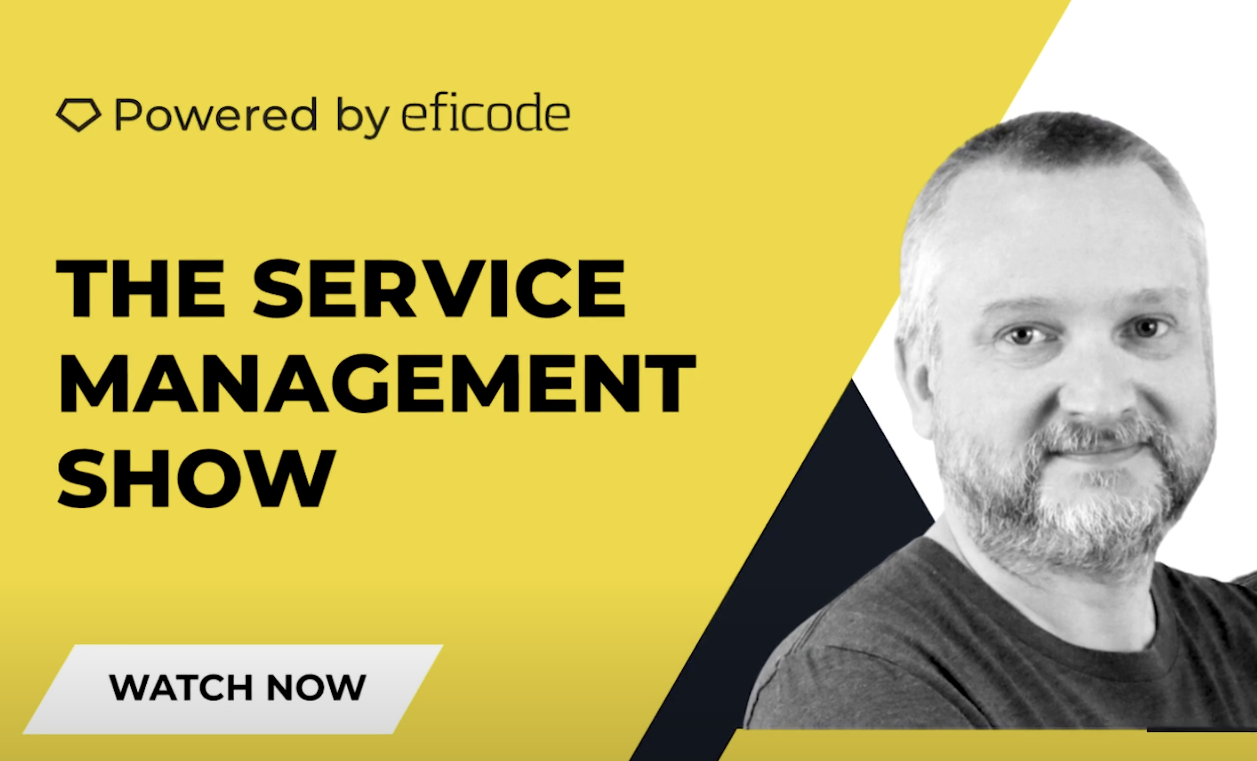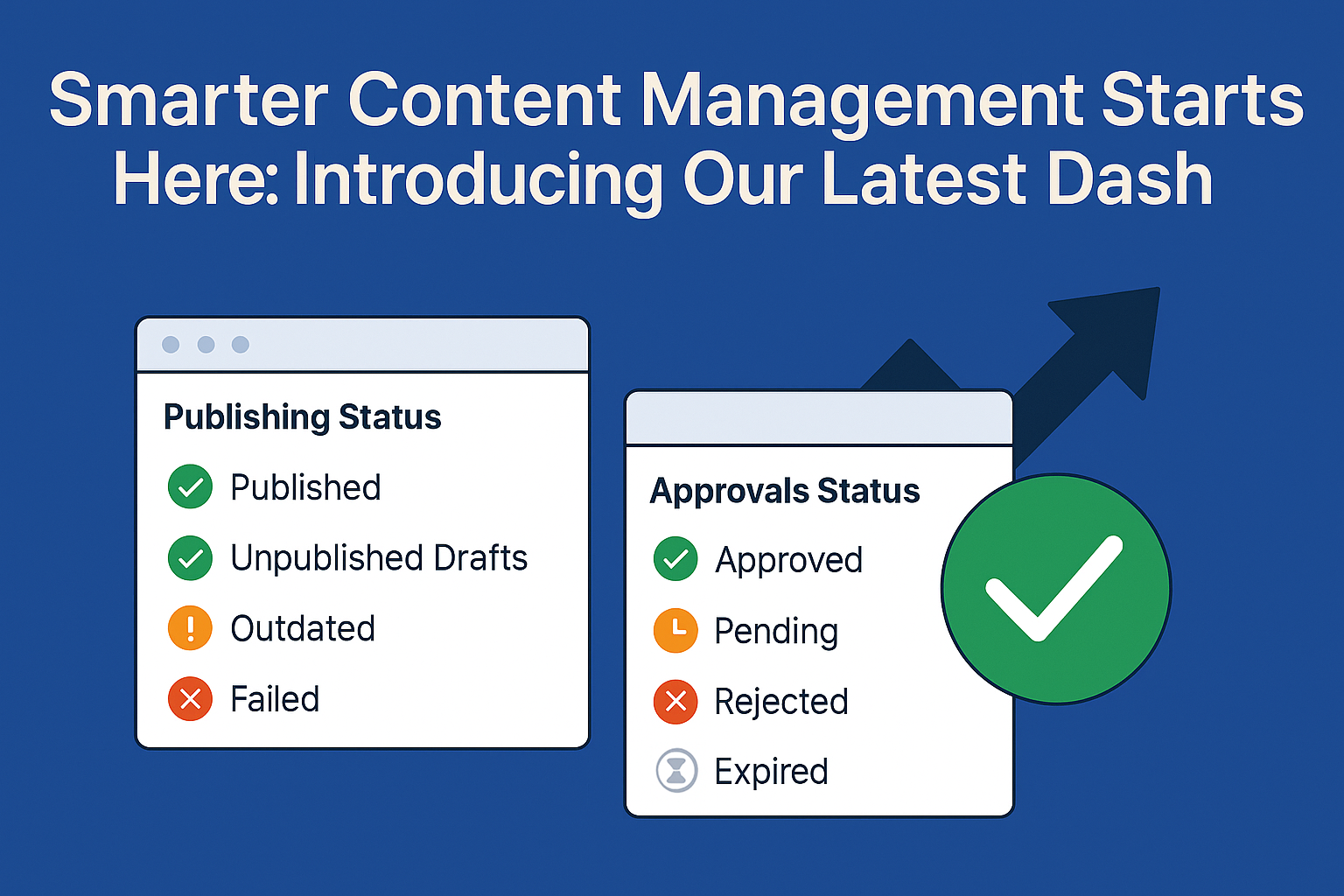Enhancing Company Efficiency Through Smarter Approval Processes
November 2, 2024
James Bridge
Approval processes can be complex and frustrating, whether you're dealing with bottlenecks, lost requests, or constant miscommunications. However, understanding the common issues and effective strategies we discuss below can lead to a significant improvement in productivity and team morale.
- Introduction
- Challenges
- Strategies
- Benefits
- How to do it right
- Conclusion
Introduction
Approval workflows can become an endless loop of emails, notifications, and reminders, creating a tangled web that leaves approvers with too many loose ends to follow and requesters overwhelmed. The next step often hinges on who received the notification, resulting in a frustrating experience that overwhelms employees and disengages them from the decision-making process. This inefficient cycle affects everyone involved, creating stress and inefficiencies across the entire team.
Getting project approvals shouldn't be exhausting. Imagine a streamlined, hassle-free approval process that saves you hours of back-and-forth each week, allowing you to focus on meaningful work instead. Rather than getting caught up in administrative tasks, you can allocate your energy toward making real progress on projects that matter.
If you're tired of chasing approvals and ready for a more efficient approach, keep reading—we’ll explore practical ways to improve the process.
Common Challenges
Approval processes come with challenges that are all too familiar to many teams. Identifying these challenges is the first step toward creating a more effective workflow.
i. The "Lost-in-the-Inbox" Problem
Sarah Thompson, a project manager at InnovateTech Solutions, was eager to kick off a new project and sent a detailed approval request to the finance team. However, as hours turned into days with no reply, she grew anxious. By Tuesday, after following up, she only received an automated message about a meeting. Finally, on Friday, she received the approval—but by then, the momentum was lost, and team members had shifted to other tasks.
This experience highlighted how easily an approval request can get buried, draining motivation and impacting productivity. Better communication tools could support smoother project execution.
ii. The "Where Did That Go?" Confusion
At Greenfield Architects, Lee Park, a Senior Architect, was waiting on feedback from multiple departments. Input was scattered across Slack, email threads, and handwritten notes. Just when Lee thought he’d gathered everything, he found a critical comment buried in an email. By then, the deadline had slipped, and the client was left waiting. A single, centralized approval platform could have saved hours and kept the proposal on track.
iii. The "I Thought You Were Handling This" Miscommunication
Dr. Maya Ramirez, a Clinical Research Director, was leading a critical project on a new drug trial. Maya assumed the Research Quality Officer was handling the final approval, while he assumed she was. This oversight delayed the trial’s next phase, highlighting the need for clearer communication and a defined approval workflow.
Strategies for Effective Approval Processes
How can you overcome these challenges? The key lies in simplifying and streamlining steps while ensuring everyone knows their role and responsibilities.
i. Centralize and Track Approvals
Centralize work in one location, such as Confluence. Picture a well-organized dashboard where every team’s work is accessible. This setup eliminates the hassle of tracking approvals and following up, providing both clarity and accountability.
ii. Notify with Intention, Not Overwhelm
Notifications are important, but they shouldn't be constant distractions. Ideally, they should be sent only when someone’s input is genuinely needed. Intentional notifications help approvers prioritize their tasks without feeling bombarded by irrelevant messages.
iii. Set Clear Deadlines
Clear timelines and expiration dates for approvals create accountability and maintain project momentum. When deadlines are communicated, everyone knows what is expected, minimizing confusion and ensuring that work continues to move forward.
iv. Assign Roles Thoughtfully
Fewer approvers can lead to faster decisions. Defining responsibilities upfront helps ensure that each person’s input is valuable and moves the process forward, reducing conflicting opinions and accelerating decision-making.
v. Use Tools That Support Your Workflow
Using the right tools can make all the difference. Tools that offer centralized tracking, clear notifications, and deadline management can simplify approvals, reducing manual errors and providing better visibility into the approval status.
Benefits of an Improved Approval Process
Implementing these strategies can transform your approval workflow, leading to several key benefits for both the team and the organization.
i. Enhanced Productivity and Efficiency
When approval processes are streamlined, teams spend less time chasing feedback and more time on high-value tasks. Improved efficiency means projects are completed on time, contributing to better overall productivity.
ii. Reduced Stress and Frustration
Disorganized approval processes can be a major source of stress. By implementing thoughtful strategies, such as centralized tracking and intentional notifications, you can eliminate stressors that arise from confusion and miscommunication.
iii. Better Team Morale and Collaboration
Effective approval processes foster a positive team environment. When roles are clear and progress is easy to track, collaboration becomes seamless, leading to fewer conflicts and better working relationships.
How to do it right
At Capable, we’ve taken all of these challenges into account, crafting Capable Approval as a solution designed directly within Confluence to tackle these common pain points head-on. After listening to stories like Sarah’s, Lee’s, and Dr. Maya’s, we realized that effective approval management requires much more than simply assigning tasks. It demands a centralized, efficient, and transparent process that keeps teams on track and motivated.
Here’s how Capable Approval is built to address each of these issues:
Tackling the "Lost-in-the-Inbox" Problem
Capable Approval brings all requests to a single, centralized location within Confluence, eliminating the risk of requests being lost in inboxes or buried in email threads. With a structured view of all pending approvals and their statuses, team members can quickly check what needs attention, avoiding delays and preserving project momentum. Instead of wondering if an email was missed, teams can access a shared dashboard where every approval status is clear and easy to track.
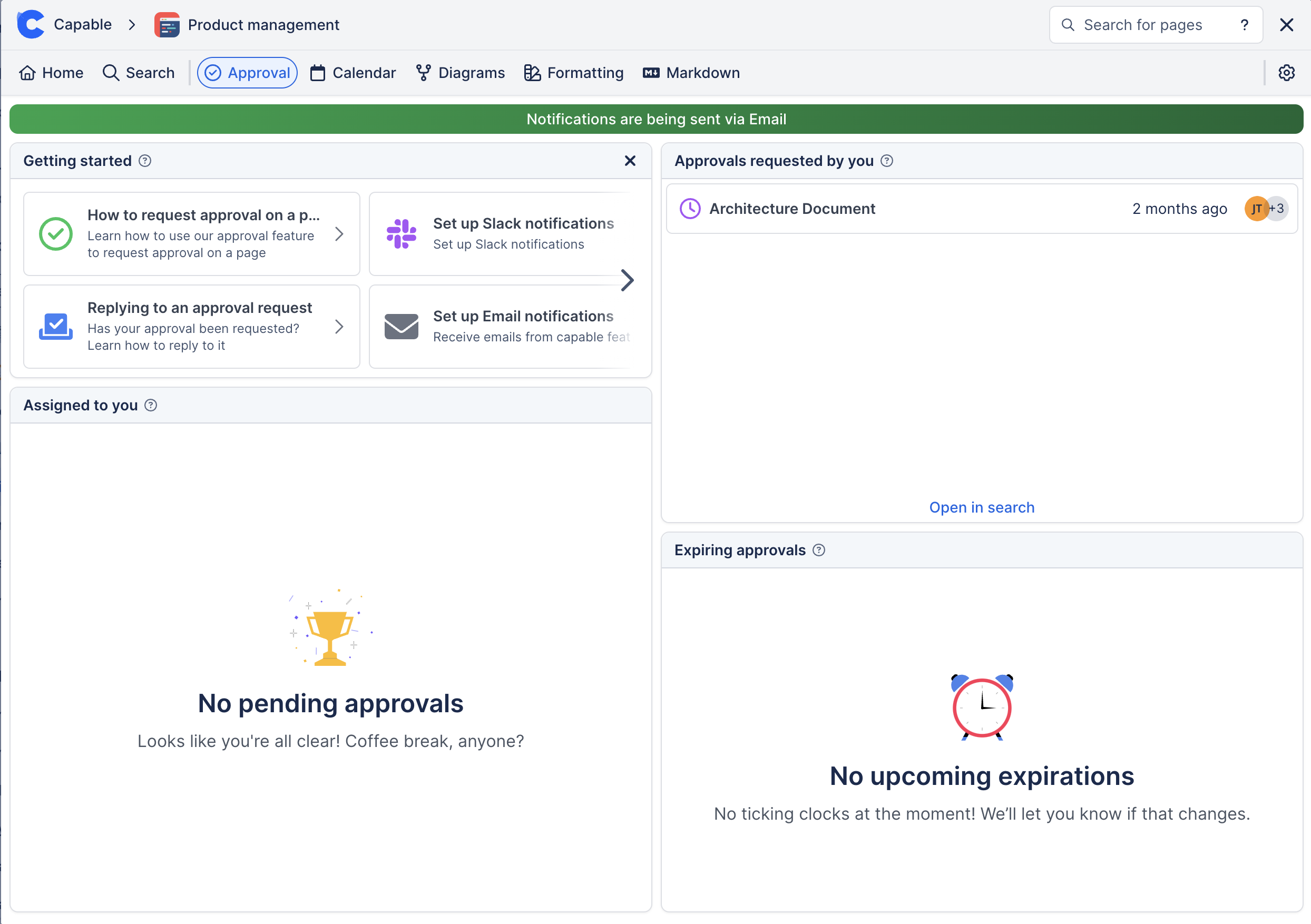
Solving the "Where Did That Go?" Confusion
Scattered feedback and decentralized approval workflows lead to confusion and wasted time. With Capable Approval, every comment, input, and decision lives in one place. Slack and email integrations keep everyone notified without creating new silos, allowing for streamlined communication without endless message chains. By consolidating feedback and approval statuses within Confluence, your team spends less time searching for lost information and more time moving projects forward.

Preventing the "I Thought You Were Handling This" Miscommunication
Roles and responsibilities are crucial in any approval process, which is why Capable Approval allows you to define specific approvers and their roles upfront. Automated notifications go directly to the responsible parties when their input is required, minimizing assumptions and ensuring accountability at every step. With Capable Approval’s role assignment and tracking, team members know exactly when it’s their turn to step in, reducing bottlenecks and promoting smoother hand-offs.
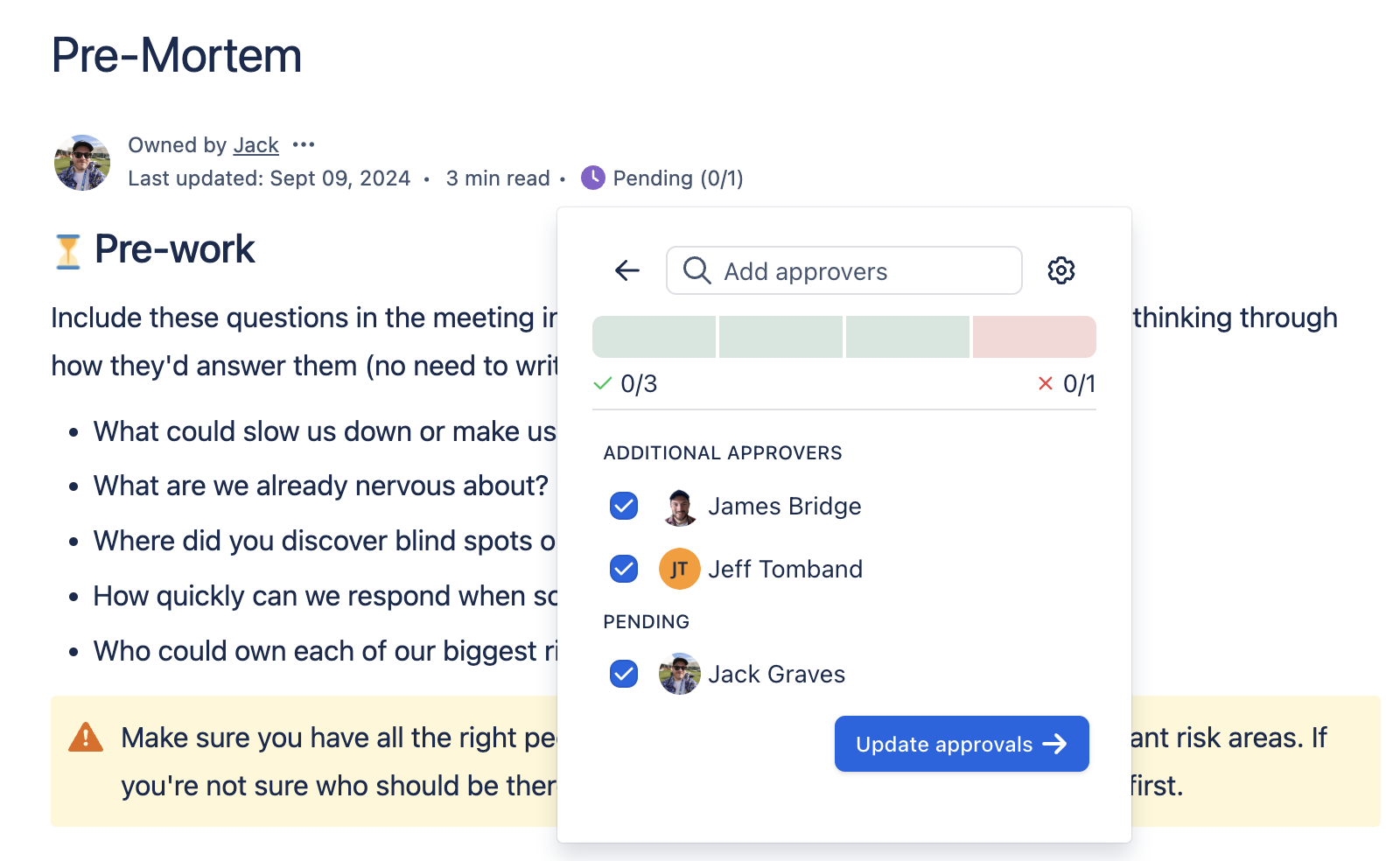
How Capable Approval Brings It All Together
- Centralized Tracking: All approvals are managed within Confluence, where teams have a clear view of pending and completed approvals, eliminating the need to chase down status updates.
- Smart Notifications: Integrated with Slack and email, notifications are sent only when necessary, ensuring that team members stay informed without being overwhelmed.
- Clear Deadlines: Set timelines for each approval stage, ensuring that requests stay on track and project momentum isn’t lost due to unclear expectations.
- Defined Roles and Responsibilities: Assigning roles keeps each team member’s duties clear, reducing delays caused by confusion over who needs to approve what.
If you're ready to enhance your approval process, Capable Approval is here to make it happen. By implementing a centralized, efficient, and transparent approval system, you can finally eliminate the chaos and frustration of scattered communication and improve productivity across your team. Start transforming your workflow today with Capable Approval and experience the benefits of streamlined, organized approvals in Confluence.
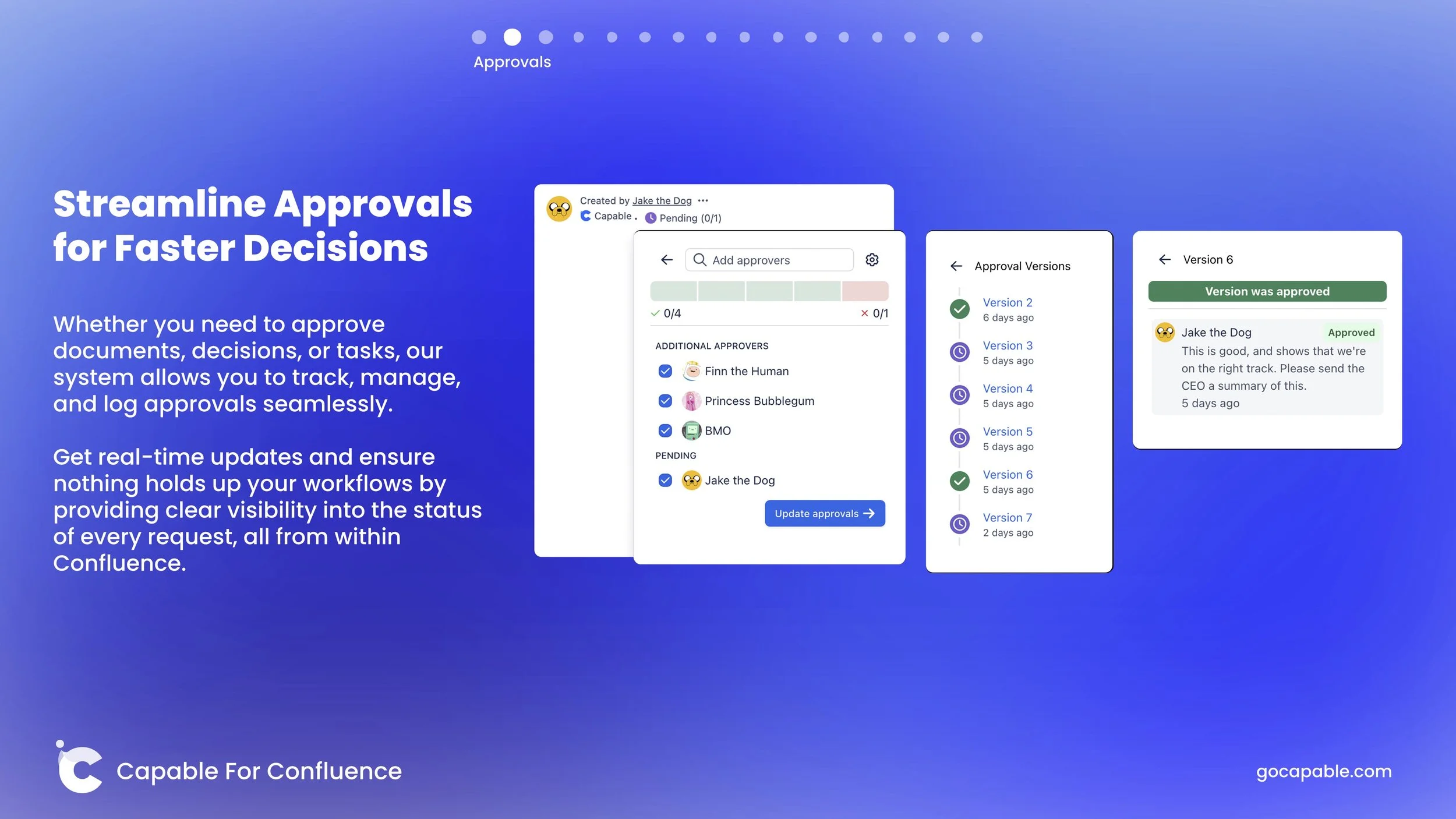
Conclusion
Approval processes don't have to be an endless loop of reminders, delays, and confusion. By centralizing approvals, setting clear deadlines, notifying with intention, and using the right tools, you can make approvals more efficient and effective. When the process is simplified, it allows the team to focus on producing high-quality work and achieving project goals.
Taking the time to implement these strategies can help you regain control of your time. Streamlining the approval process benefits everyone involved—reducing frustration, improving productivity, and leading to better project outcomes.
%20copy.png)




